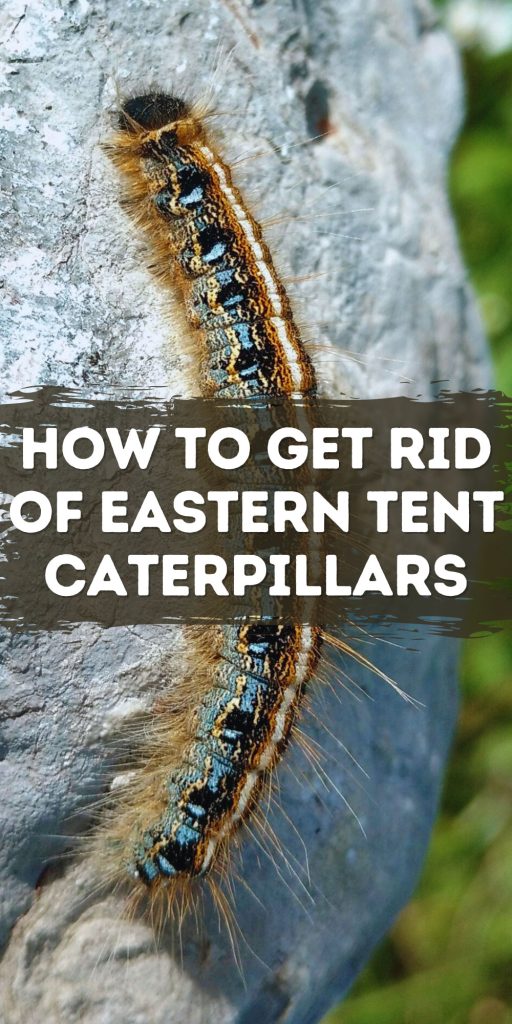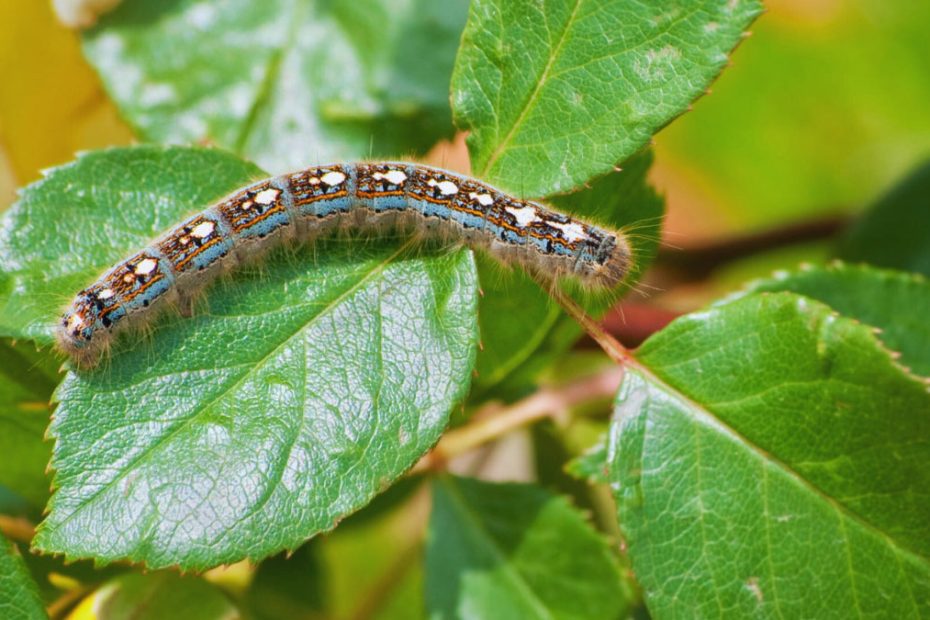Eastern tent caterpillars can turn your beautiful garden into a nightmare, chewing through leaves and creating unsightly webs in your trees. These pests are not just a minor inconvenience; they can cause significant damage to your plants and trees if left unchecked. Understanding how to effectively manage and eliminate these caterpillars is crucial for maintaining a healthy garden.
You’ve probably noticed their silky tents in the crooks of tree branches, especially in early spring. While they might seem harmless at first, their rapid reproduction and voracious appetite can quickly escalate the problem. In this guide, you’ll discover practical and effective methods to get rid of eastern tent caterpillars and protect your garden from future infestations.
Key Takeaways
- Understand Eastern Tent Caterpillars: Recognizing the appearance, lifecycle, and impact of eastern tent caterpillars is essential for effective garden management.
- Identify Infestations Early: Detecting signs like silk tents, chewed leaves, and caterpillar droppings early can help mitigate damage and allow for prompt action.
- Utilize Natural Removal Methods: Engage in manual removal techniques and encourage natural predators like birds and beneficial insects to manage caterpillar populations without chemicals.
- Consider Chemical Control: Use insecticides such as carbaryl, permethrin, or spinosad when natural methods are insufficient, following safety and application guidelines to minimize environmental impact.
- Prevent Future Infestations: Regularly monitor your garden, prune trees, clean debris, and employ habitat modifications to reduce the risk of eastern tent caterpillar outbreaks.

Understanding Eastern Tent Caterpillars
Eastern tent caterpillars are common pests that can significantly impact your garden’s health. Knowing their characteristics and lifecycle helps you address infestations effectively.
Characteristics
Eastern tent caterpillars, known scientifically as Malacosoma americanum, display distinct physical and behavioral traits:
- Appearance: These caterpillars are black with white stripes running down their backs and have blue and yellow markings on their sides.
- Life Cycle: They emerge in early spring and undergo five to six larval stages before becoming moths.
- Habitat: They create silk tents in the forks of tree branches, particularly in cherry, apple, and crabapple trees.
- Diet: Primarily feed on leaves, causing extensive defoliation.
Lifecycle Stages
Understanding the lifecycle of eastern tent caterpillars enables you to target them at vulnerable phases:
- Egg Stage: Female moths lay egg masses on tree branches in late spring. Eggs overwinter and hatch in early spring.
- Larval Stage: Caterpillars emerge and begin feeding and constructing silk tents.
- Pupal Stage: Caterpillars form cocoons, typically in foliage or on buildings, lasting several weeks.
- Adult Moth Stage: Moths emerge from cocoons, mate, and the cycle begins anew.
Impact on Gardens
Eastern tent caterpillars can devastate your garden:
- Defoliation: Extensive leaf damage weakens trees and reduces photosynthesis, affecting tree health.
- Aesthetic Damage: Unsightly silk tents and chewed leaves detract from garden appeal.
- Defoliation: The loss of leaves from a plant.
- Silk Tents: Structures made by caterpillars to protect themselves during feeding.
By understanding these caterpillars’ characteristics, lifecycle, and impact, you can carry out effective control measures to protect your garden.
Identifying Infestation
Detecting an eastern tent caterpillar infestation early helps minimize garden damage. Recognizing signs and knowing their common hiding spots will aid in effective management.
Signs and Symptoms
Identifying an infestation involves spotting specific indicators. Look for these signs:
- Webbing: Noticeable silk tents in tree forks.
- Damaged Leaves: Chewed edges on leaves reveal feeding activity.
- Caterpillars: Black, hairy caterpillars with a white stripe down their backs.
- Frass: Caterpillar droppings around the infected area.
Common Hiding Spots
Eastern tent caterpillars have preferred shelters. Check these areas closely:
- Branches: Upper branches and crotches of trees are common nesting spots.
- Tree Bark: Cracks in bark provide shelter for eggs and larvae.
- Leaf Clusters: Dense clusters of leaves serve as feeding grounds.
- Nearby Vegetation: Understory plants may harbor migrating caterpillars.
Monitor these signs and spots regularly to control infestations effectively.
Natural Methods to Get Rid of Eastern Tent Caterpillars
Natural methods to get rid of eastern tent caterpillars focus on environmentally friendly approaches that maintain your garden’s health. Carry out these strategies early to prevent infestations from escalating.
Manual Removal Techniques
Manual removal techniques can effectively reduce eastern tent caterpillar populations. Look for these methods to minimize reliance on chemical treatments:
- Hand-Picking: Wear gloves, then remove caterpillar tents and caterpillars by hand. Place them in a sealed bag and dispose of them in the trash.
- Pruning: Use pruning shears to cut off branches with tents, especially in the early stages of infestation when the tents are small. Burn or dispose of pruned branches to ensure caterpillars don’t return.
- Water Spray: Use a strong jet of water to dislodge caterpillars from infested branches. This method works best in the larval stage before extensive tent formation.
Utilizing Predators
Predators can naturally control eastern tent caterpillar populations without adverse environmental impacts. Encourage these natural enemies in your garden:
- Birds: Attract insectivorous birds like robins, orioles, and blue jays, which feed on caterpillars. Provide bird feeders and nesting sites to keep these birds in your garden.
- Beneficial Insects: Encourage ladybugs, beetles, and wasps, which prey on caterpillars and eggs. Planting nectar-rich flowers can attract these beneficial insects.
- BTK (Bacillus thuringiensis var. kurstaki): Apply this natural bacterium to affected trees to target caterpillars. It specifically disrupts their digestive systems without harming other wildlife.
These natural methods can effectively manage eastern tent caterpillar infestations while preserving your garden’s health. Early detection and consistent application of these techniques contribute to long-term pest control.
Chemical Control Options
Chemical control can offer effective solutions for managing eastern tent caterpillars when natural methods aren’t sufficient. It’s important to choose the right products and apply them properly to minimize environmental impact and ensure safety.
Insecticides
Insecticides are often used to control caterpillar populations. When selecting an insecticide, look for products labeled for tent caterpillars to ensure effectiveness.
Common Insecticides:
- Carbaryl: Broad-spectrum insecticide effective but can impact beneficial insects.
- Permethrin: Commonly used due to its potency against various pests.
- Spinosad: Derived from natural bacteria but effective against caterpillars.
Application Tips and Safety
Proper application of insecticides maximizes their effectiveness and minimizes risks. Follow these guidelines for best results:
- Timing: Apply early in the morning or late in the afternoon when caterpillars are less active.
- Coverage: Ensure thorough coverage of the infested areas to reach all caterpillars.
- Weather Conditions: Avoid spraying on windy or rainy days to prevent drift and runoff.
- Protective Gear: Wear gloves, long sleeves, and eye protection to avoid skin and eye contact with chemicals.
- Label Instructions: Always follow label instructions about dosage and application methods to ensure safety and efficacy.
- Environmental Precautions: Avoid spraying near water sources and flowering plants to protect non-target species.
By following these steps and choosing the right insecticides, you can effectively control eastern tent caterpillar populations while safeguarding your garden and environment.
Preventing Future Infestations
Preventing future infestations of eastern tent caterpillars involves a combination of monitoring and habitat modifications. These proactive steps can help maintain a healthy garden and minimize the risk of caterpillar outbreaks.
Regular Monitoring
Regularly monitoring your garden is crucial for early detection of eastern tent caterpillar activity.
Steps for Effective Monitoring
- Inspect Trees and Shrubs: Regularly check branches, leaves, and tree forks for signs of caterpillar presence, like silk tents or chewed foliage.
- Check in Early Spring: Focus monitoring efforts in early spring when caterpillars are most active and easier to spot.
- Record Observations: Keep a log of your findings, including dates and specific locations of any infestations.
- Use a Magnifying Glass: Aid in the identification of small caterpillars or eggs.
- Consult Local Agricultural Extensions: Seek advice and updates about caterpillar activity in your area.
Habitat Modifications
Making changes to your garden environment can deter caterpillars and reduce their habitation options.
- Prune Trees Regularly: Remove dead or overhanging branches where caterpillars can form tents.
- Clean Debris: Clear fallen leaves and other plant matter from around trees to eliminate potential breeding sites.
- Apply Horticultural Oils: Use oils during the dormant season to suffocate overwintering egg masses on trees.
- Encourage Natural Predators: Plant flowers and shrubs that attract birds and beneficial insects known to prey on caterpillars.
- Use Tree Bands: Place sticky bands around tree trunks to trap caterpillars climbing to form tents.
Proactively employing these tactics improves garden resilience, reducing the likelihood of future infestations of eastern tent caterpillars.
Conclusion
Managing eastern tent caterpillars requires vigilance and a combination of strategies. By identifying infestations early and using natural control methods, you can protect your garden’s health and aesthetics. If natural methods fall short, carefully selected chemical options can provide additional support. Regular monitoring and habitat modifications will help prevent future infestations, ensuring your garden remains vibrant and thriving. With these practical and effective strategies, you can confidently tackle eastern tent caterpillar challenges and maintain a beautiful, healthy garden.
Frequently Asked Questions
What are eastern tent caterpillars?
Eastern tent caterpillars are pests that can damage gardens by consuming leaves and creating webs in trees. They are recognizable by their black, hairy bodies with a white stripe.
When do eastern tent caterpillars appear?
Eastern tent caterpillars typically appear in early spring. They can rapidly reproduce during this time, leading to potential garden infestations.
How can I identify an infestation of eastern tent caterpillars?
Look for silk tents in tree forks, chewed leaf edges, black, hairy caterpillars with a white stripe, and caterpillar droppings. They often hide in upper branches, tree bark cracks, and dense leaf clusters.
What are the natural methods for controlling eastern tent caterpillars?
Natural methods include hand-picking caterpillars and their tents, pruning infested branches, using a strong water spray, and encouraging natural predators like insectivorous birds and beneficial insects.
What is BTK, and how does it help control eastern tent caterpillars?
BTK (Bacillus thuringiensis var. kurstaki) is a biological pesticide that disrupts the digestion of caterpillars without harming other wildlife. It’s an environmentally friendly option for controlling caterpillar populations.
Are there chemical options for managing eastern tent caterpillars?
Yes, chemical options include insecticides like carbaryl, permethrin, and spinosad. They should be applied with care, following guidelines to maximize effectiveness and minimize environmental impact.
How can I prevent future infestations of eastern tent caterpillars?
Regular monitoring, especially in early spring, and habitat modifications like pruning, cleaning debris, applying horticultural oils, and using tree bands can help prevent future caterpillar infestations.
Why is early detection of eastern tent caterpillar infestations important?
Early detection is crucial to manage infestations before they severely damage your garden. It allows for timely interventions to control the caterpillar population effectively.
What are the lifecycle stages of eastern tent caterpillars?
Eastern tent caterpillars go through four stages: egg, larval, pupal, and adult moth. Most of their damage occurs during the larval stage when they feed on leaves and create silk tents.
